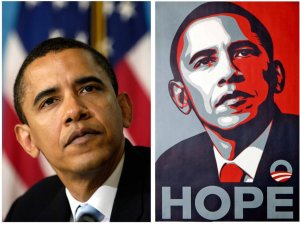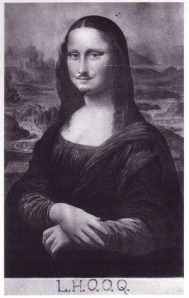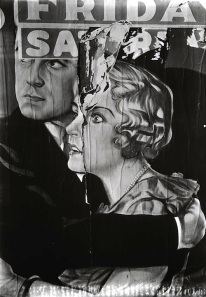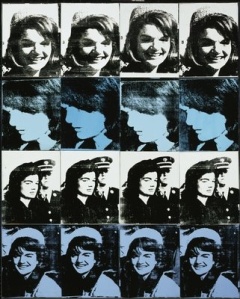A recent fair use case that is appears to have come to a final (legal) resolution, but very much part of pop culture discussion today, is that of Shepard Fairey and his Obama “Hope” poster.
Fairey, a street artist, created the original scree print with the use of a Associated Press photograph, featuring the then Presidential candidate. The image quickly emerged as the unofficial icon for the high profile campaign. One can easily argue that Fairely was within his rights under Fair Use laws because the dominating features of the work are not dependent on the original AP image. However, his ethics become a bit more questionable when you account for the fact that he charged manufactures of clothing, print works, and other memorabilia to use the image, without ever sourcing AP.Months went on without either AP or the original photographer recognizing the source of the image. When the source was finally discovered Fairey owned up to his unlicensed use of the image. The AP sought to sue the artist for copyright infringement but the artist then rebutted by counter suing the AP. Eventually the two parties settled out of court. Although, the case does not end there.
Fairy was taken to court again, this time for lying to the court and withholding evidence in his original trial. He originally claimed to have used a different AP photo of Obama, one that is less similar to his final design. The artist pleaded guilty and was sentenced to community service and order to never use an AP image again without the organization’s consent.
Ethics aside, and both sides of this case certainly have grounds for debate. Money and claim to fame are huge factors in the creative world, something I feel it is important for students to understand. Even if Fairey was morally sound in his use of the Obama image, he has repeatedly sued other artists for appropriating his own images and made a fortune selling the rights to his works.The AP on the other hand faced no real damages under Fairey’s hands. It seems that this entire battle began because a powerful company (not the original photographer) saw an opportunity to get media attention, monetary gains, and a artistic credit from an historically important piece of pop culture. In fact, while researching for this post, I realized that most images I came across regarding this case, Fairey’s other works, and Fairey’s himself, were all owned by AP. Media outlets seeking to use even a stock photo of the artist were charged a hefty sum by the AP. Bit ironic, no?
However, not all cases of artists using media images in their pieces have created such controversies. The examples below, taught uncontroversially in any survey of modern Art History, could be used to facilitate such a discussion in classrooms or coffee shops alike:
Marcel Duchamp, L.H.O.O.Q., 1919, post card reproduction with mustache and title added in pencil, Wikimedia Commons
Duchamp, famous for his “ready mades” drew a mustached and added the title “L.G.O.O.Q.” with graphite pencil on a postcard reproduction of Leonardo da Vinci’s Mona Lisa (1503-1517)
Walker Evans, Movie Poster, 1930, photograph, Wikimedia Commons
Some of Evans’s most famous works were his photographs of advertisements and movie posters pasted on the outside of buildings.
One of Andy Warhol’s prolific portraits, Sixteen Jackies was created with cropped photos from newspaper clippings.
Some Great Learning Materials for Educators:
Teachers, Check out this great lesson plan on Fairy’s legal issues and “fair use,” from The SmART Teacher art ed blogger, LiveColorfully
Remix The Book offers up some fantastic discussion topics regarding appropriation and the arts great for the classroom or gallery opening.
Interested in becoming an advocate for free use and equal access to digital culture?
Creative Commons is a non-profit that “develops, supports, and stewards legal and technical infrastructure that maximizes digital creativity, sharing, and innovation.” They offer great education information, copyright licenses, and a platform to share your own creative material discover great material, all free and legally accessible for public use.
The Free Culture Foundation has some basic educational resources and opportunities to get involved. The organization (though not the movement) began as a student organization. It recently expanded to all communities advocates, but appears to be very much rooted in a campus-based, minimally-hierarchical that is particularly accessible to students. (Super out-of-the box class project?)
*This post originally appeared on my wordpress hosted blog: musinginmuseums.wordpress.com
*This post originally appeared on my wordpress hosted blog: musinginmuseums.wordpress.com




No comments:
Post a Comment